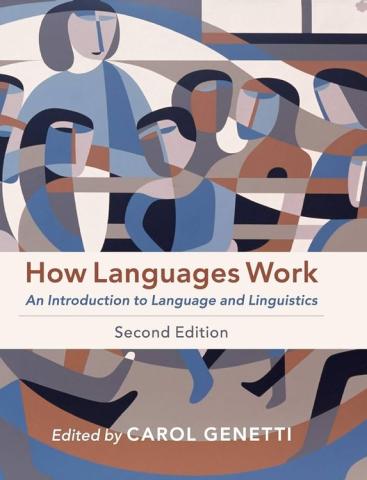How Languages Work
Student Resources
Important Notice: The How Languages Work web site has migrated to a new server. Interactive materials (e.g., quizzes, flashcards, tools) are currently unavailable as they are being re-written for the new content management system. We hope to bring back these valuable learning aids in Summer 2024. We apologize for the inconvenience.

Available Resources
Here you will find a range of supplementary materials, interactive questions and exercises, which have been arranged by chapter and language profile. Please use the menu at the top to expand the section you require.
The wireless (Wireless Icon) icon is used in the text when you should access these materials or explore other online resources.
There are three main sections of this website: the toolkit, chapters, and language profiles. The toolkit contains resources that you should reference while learning the content, while the chapters and language profiles contain interactive materials to help you learn the content. Read more about each section below.
Toolkit
The "Toolkit" section is equipped with essential resources you can reference while learning. These include:
-
Interactive IPA Chart with sound files for American and British English pronunciations of English phones. You can toggle back and forth between seeing the whole IPA chart and the IPA set for English.
-
An IPA keyboard to type an IPA transcription by clicking on the symbols in the IPA chart; this produces a text which can be copied and pasted into documents.
-
Glossary with terms indexed by chapter and language profile.
Chapters and Language Profiles
The chapters and language profiles include many interactive tools to help you learn the material. These include:
-
Vocabulary quizzes with multiple-choice questions--one set you must choose the correct definition, the other set you choose the correct terminology.
-
Reading quizzes follow the format of the vocabulary quizzes and vary depending on the content of the chapters.
-
Interactive materials vary by chapter, but include things like step-by-step analysis modules where students work through problems and get feedback if they do something incorrectly.
-
Analysis guides for some chapters providing step-by-step processes for different types of linguistic analysis.
-
Writing for Linguistics documents explicitly discuss how one presents linguistic analysis in academic prose.
-
Audio files related to particular examples in the chapters and language profiles.
-
Answers to Stop and Reflect Boxes that you will encounter throughout the textbook.
-
Transcripts for chapters where transcribed audio data is relevant.
-
A variety of materials associated with the Language Profiles. Materials will vary significantly across the language profiles.